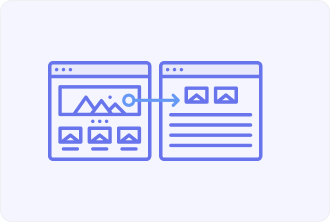Horizontal Prototype Definition

Horizontal prototype – shows how a user interacts with different design features.
Typically used in software design to help developers understand the user interface of a project.
Horizontal prototypes show how menus, windows, and screens work on a computer to check how easy the product will be to use and interact with users.
Advantages and disadvantages of the horizontal prototype
Navigating in the digital labyrinth of horizontal prototype demands a mastery an sometimes understanding this concept is like trying to herd cats chaotic, unpredictable and risky. For you to not be exploring a dark cave without a map we will consider pros and cons of this prototype.
Let’s start with the ability to provide stakeholders with a tangible representation of user interface — creating a broad but shallow software version you are able to perceive overall functionality. Being a valuable communication tool horizontal prototype connects customer with developers and designers presenting clearer discussions which means everyone is involved an share a common understanding of software creation.
As for the drawback sharing notable that horizontal prototype has limited functionality underlying solution performance which leads to unrealistic expectations and misconceptions.